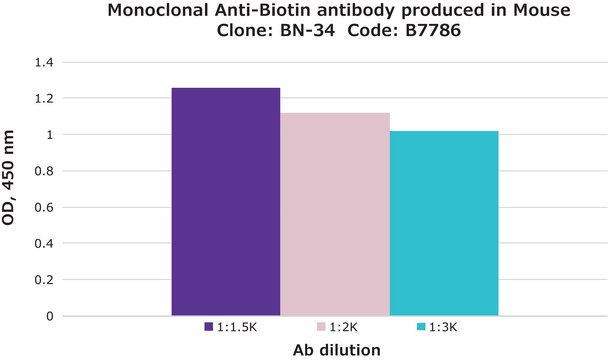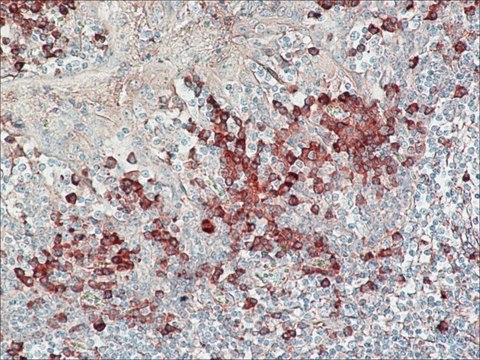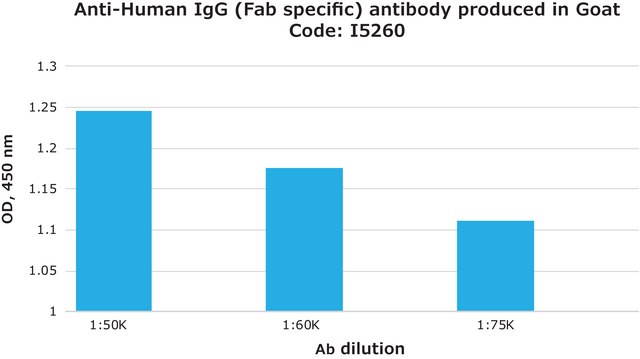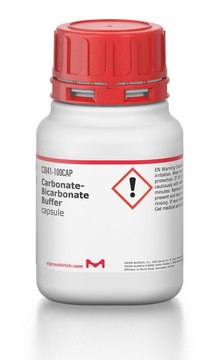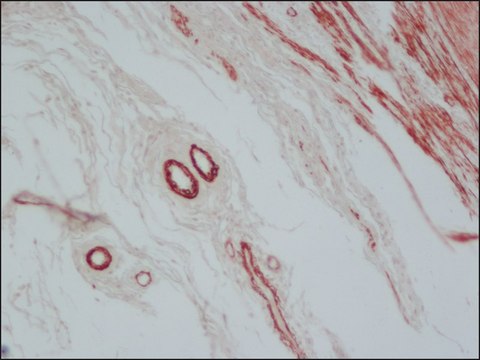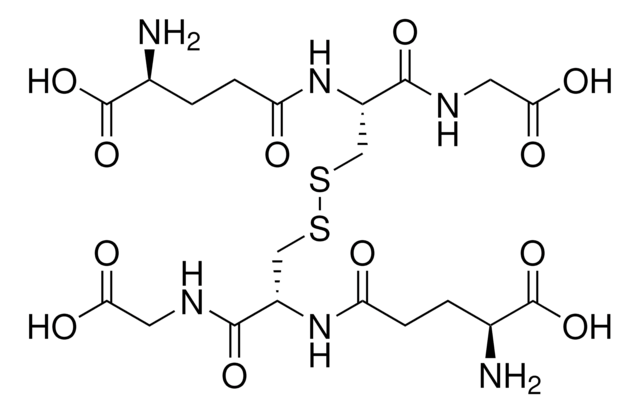B2661
Anti-fd Bacteriophage−Biotin antibody produced in rabbit
~3.5 mg/mL, IgG fraction of antiserum
Synonym(s):
Anti-fd Bacteriophage
About This Item
Recommended Products
biological source
rabbit
Quality Level
conjugate
biotin conjugate
antibody form
IgG fraction of antiserum
antibody product type
primary antibodies
clone
polyclonal
concentration
~3.5 mg/mL
technique(s)
indirect ELISA: 1:500-1:1,000 using 1010-1011 phage/ml coated wells
shipped in
dry ice
storage temp.
−20°C
target post-translational modification
unmodified
Looking for similar products? Visit Product Comparison Guide
Specificity
Immunogen
Application
Physical form
Disclaimer
Not finding the right product?
Try our Product Selector Tool.
Storage Class Code
10 - Combustible liquids
WGK
nwg
Flash Point(F)
Not applicable
Flash Point(C)
Not applicable
Regulatory Information
Choose from one of the most recent versions:
Certificates of Analysis (COA)
Don't see the Right Version?
If you require a particular version, you can look up a specific certificate by the Lot or Batch number.
Already Own This Product?
Find documentation for the products that you have recently purchased in the Document Library.
Which document(s) contains shelf-life or expiration date information for a given product?
If available for a given product, the recommended re-test date or the expiration date can be found on the Certificate of Analysis.
How do I get lot-specific information or a Certificate of Analysis?
The lot specific COA document can be found by entering the lot number above under the "Documents" section.
The description states Product B2661, Anti-fd Bacteriophage, may be used for staining DNA, chromosomes and nuclei, and for fluorescence microscopy or flow cytometry. Are there other uses for the product?
The product has also been used for the detection of apoptosis, applied as a label to live cells, as a component of BrdU cell cycle investigation.
What is the expected solution stability for aqueous solutions of Product B2661, Anti-fd Bacteriophage?
Aqueous solutions are stable for 1 month if kept in the dark at 2-8 °C.
Which is more cell permeable, H33342 or H33258?
H33342 has been found to be about 10 times more cell-permeable than H33258. See Science, 282(5387), 296-298, (1998).
What is the specificity for H33342?
The bisBenzimide Hoechst 33342 is a specific stain for AT-rich regions of double-stranded DNA and has been shown to displace several known DNA intercalators. Reference: Loontiens, F. G., et al., Binding characteristics of Hoechst 33258 with calf thymus DNA, poly[d(A-T)] and d(CCGGAATTCCGG): multiple stoichiometries and determination of tight binding with a wide spectrum of site affinities. Biochemistry, 29, p. 9029 (1990).
When using Product B2661, Anti-fd Bacteriophage, which is the preferred Hoechst stain for chromosomes?
Hoechst No. 33258 and not Hoechst No. 33342 is the preferable dye for chromosomal staining.
What is the pH of Product B2661, Anti-fd Bacteriophage, in solution?
There is no pH test specification for product B2261 on a lot-to-lot basis. A one-time measurement of the pH of a 2% solution was 1.9. It has been observed that this material will precipitate from phosphate buffer solutions.
Will chromosomes that are dividing or replicating stain with Product B2661, Anti-fd Bacteriophage?
No; chromosomes that are dividing or replicating will not stain with this dye.
How do I find price and availability?
There are several ways to find pricing and availability for our products. Once you log onto our website, you will find the price and availability displayed on the product detail page. You can contact any of our Customer Sales and Service offices to receive a quote. USA customers: 1-800-325-3010 or view local office numbers.
What is the Department of Transportation shipping information for this product?
Transportation information can be found in Section 14 of the product's (M)SDS.To access the shipping information for this material, use the link on the product detail page for the product.
My question is not addressed here, how can I contact Technical Service for assistance?
Ask a Scientist here.
Our team of scientists has experience in all areas of research including Life Science, Material Science, Chemical Synthesis, Chromatography, Analytical and many others.
Contact Technical Service